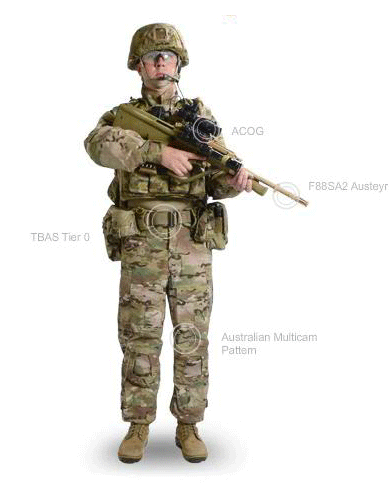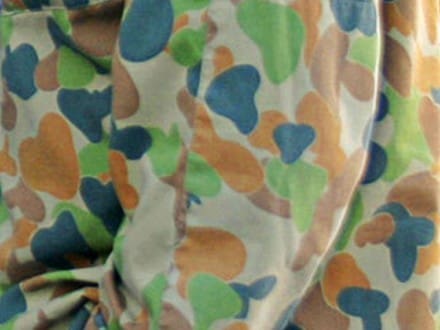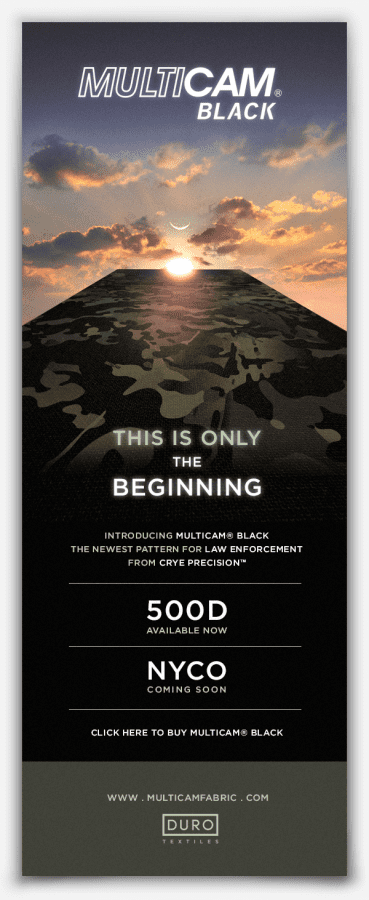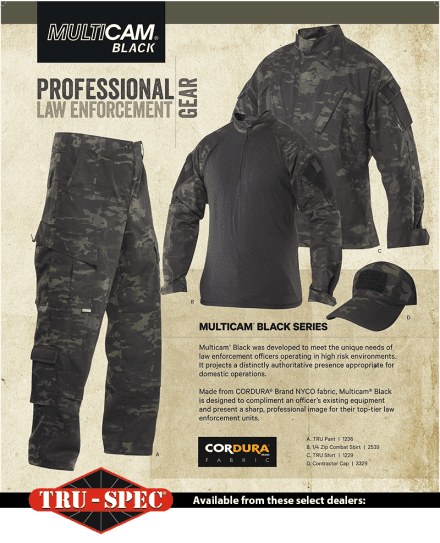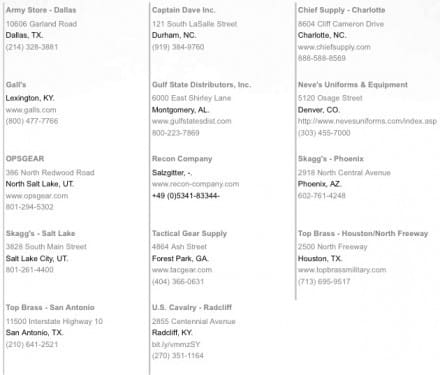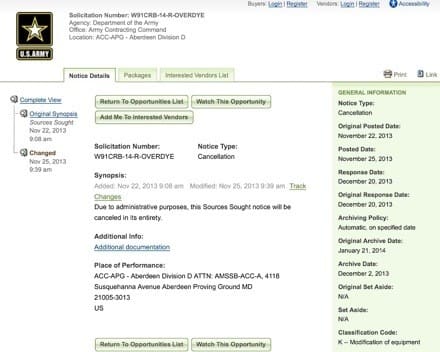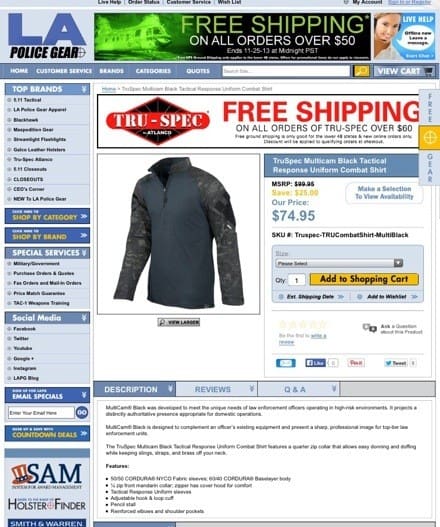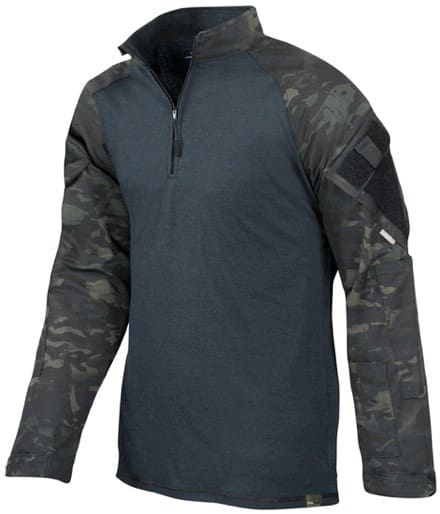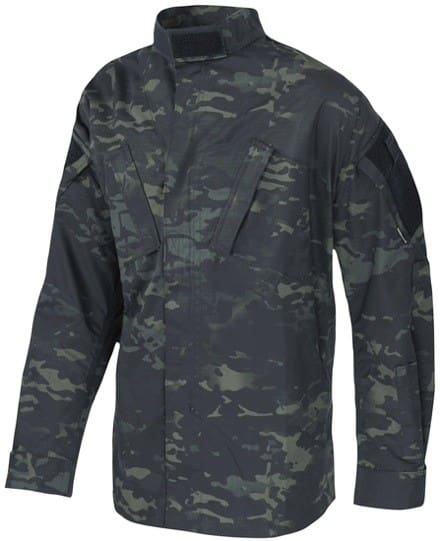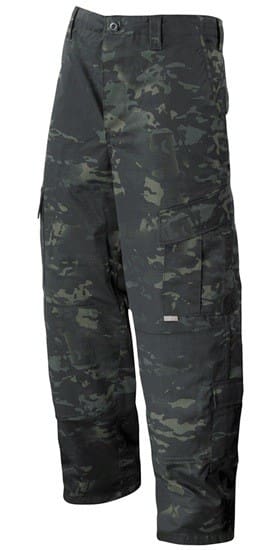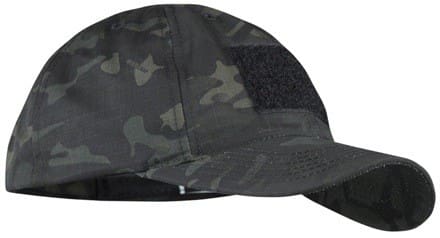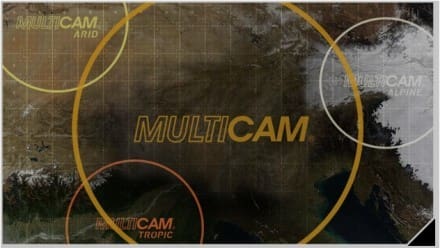
Today, Crye Precision officially released four new variant camouflage patterns based on the ever popular MultiCam; Arid, Tropical, Alpine and Black. Each is designed for specialized use while the classic MultiCam transitional pattern continues to be great for more universal wear as it tends to blend into most any environment. While Transitional and Black are available for order now, Duro Textiles will have the other new patterns available for order soon.
One new feature you may notice is that the MultiCam family of patterns all feature branding embedded in the print.
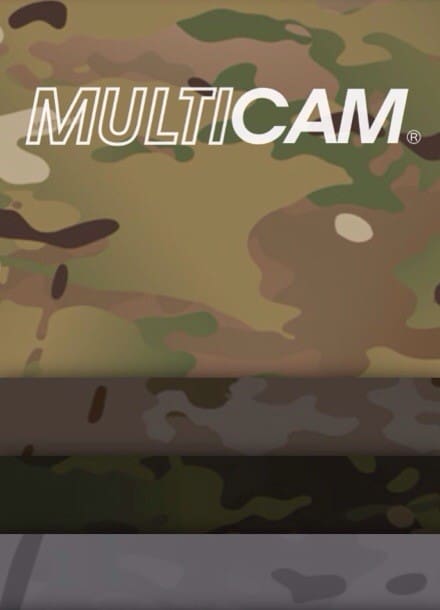
MultiCam is the combat-proven solution for concealment when operating in widely varied and mixed terrain. While MultiCam is suited to an extremely wide selection of environments, we have developed three new patterns that are optimized for narrower areas of operation. These new patterns work well with the primary MultiCam pattern to meet the needs of these extreme environments, thus expanding the performance envelope of the MultiCam family to cover nearly every possible environmental condition. The MultiCam patterns can be used alone or in conjunction with each other to meet nearly any operational requirement.
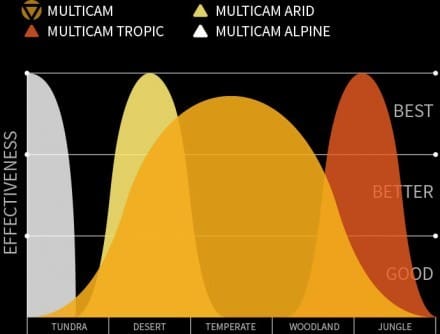
The same user now has more system-level options. For instance, a MultiCam chest rig can be paired with a MultiCam Tropic uniform for a known jungle deployment. Similarly, a MultiCam vest and pack can be paired with a MultiCam Arid uniform for activity within an open sand and rock desert. MultiCam Alpine is best suited for any environment encountering significant snowfall, while MultiCam Black is designed to offer domestic agencies a distinct and authoritative presence suited to law enforcement operations.
The MultiCam patterns were developed to provide maximum effectiveness across diverse operating environments with a minimum logistical burden. The patterns all have distinct roles but are designed to work together as a system to meet the needs of nearly any operating environment, all while helping the wearer do so with the least amount of kit possible.
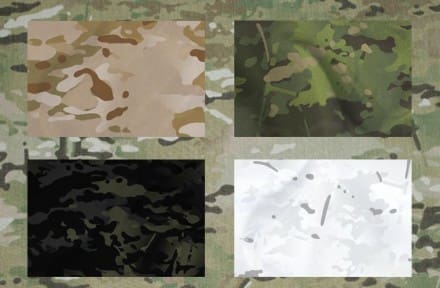
THE MULTICAM FAMILY OF PATTERNS CONSISTS OF:
MultiCam: The base – the original combat-proven pattern that offers the widest range of environmental effectiveness – ideally suited for apparel & gear that must be employed throughout mixed or varied environments.
MultiCam Arid: A pattern intended for open sand and rock – ideally suited for apparel when working exclusively in bright open desert terrain.
MultiCam Tropic: A pattern intended for deep verdant jungle use – ideally suited for apparel when working exclusively in a dense jungle environment.
MultiCam Alpine: A pattern intended for snow-covered areas – ideally suited for over-garments and gear covers when/where snow cover is present.
MultiCam Black: While not a geographically-based pattern, MultiCam Black gives law enforcement groups a sharp and authoritative presence suited to domestic L.E. operations where projecting a strong and distinct image is a critical concern. MultiCam Black is designed to complement a wide range of existing armor and gear colors (for instance, green or black vests both look well-matched when paired with MultiCam Black uniforms).
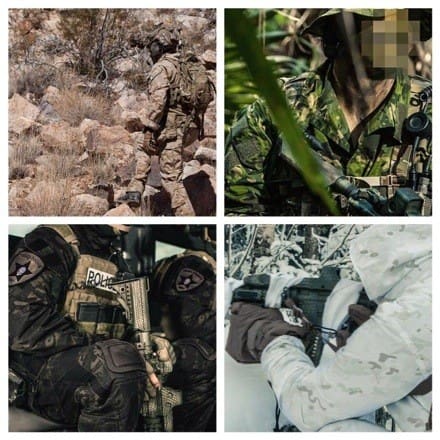
Along with the release of the new patterns, MultiCamPattern.com has been updated.


